This article discusses the most common snake parasites. You will learn how to spot them, treat them, and when to see a vet.
Last updated on February 1st, 2023 at 09:41 am
The most common snake parasites are mites, ticks, intestinal worms and protozoa. Most of these use snakes as their definitive hosts, rather than intermediate hosts. This means they reach adulthood while living on your pet and can rapidly grow in population. Identifying and controlling them in captivity is vital for the animal’s health.
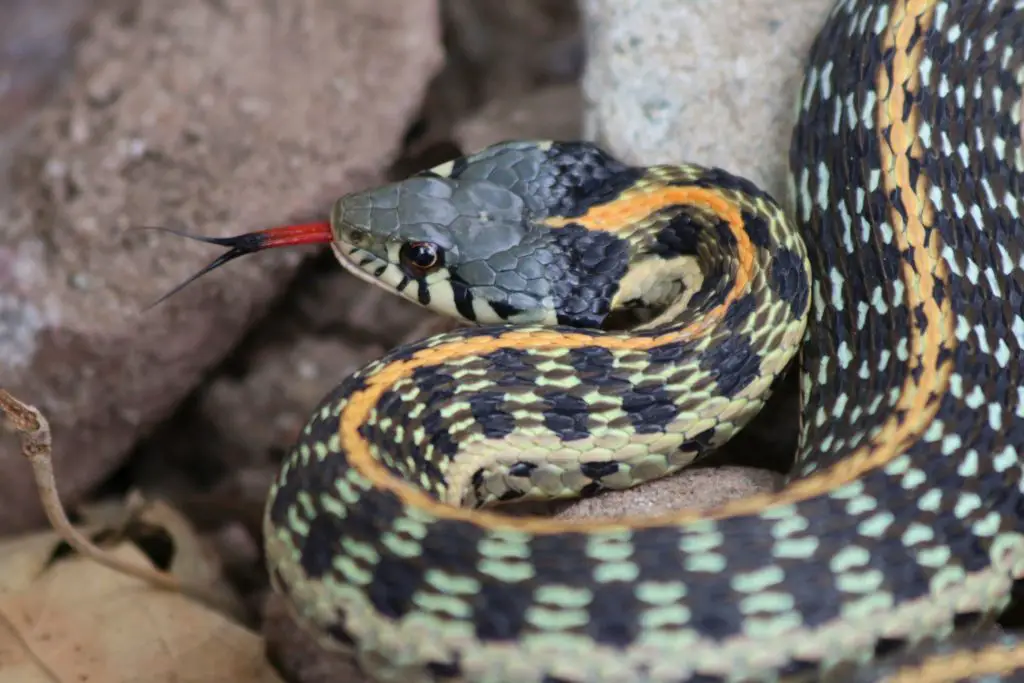
Snake Mites
Mites are both extremely annoying and highly detrimental for your pet snake. When they colonize a snake, they reproduce and increase in number at an astonishing rate. A female mite can produce one thousand babies, which will quickly start sucking the blood of your snake.
More to the point, they can be fatal if you don’t treat them early. Your snake could die of anemia or septicemia (blood poisoning).
Veterinarians commonly refer to mite infestation as Acariasis.
Symptoms of Snake Mites
When a snake has mites, the first thing that you will notice is a change in your pet’s behavior. The snake will remain restless and agitated due to the irritation caused by these blood-sucking ectoparasites.
Most snakes show the following symptoms when suffering a mite infestation:
- Irritation
- restlessness
- Getting in water most of the time
- Digging
- Twitching head
- Small moving dots around eyes, mouth, or under the chin
- Side to side head wavering
- Specks floating in water used by snake
- Abnormal scales
- Loss of appetite
- Difficulty in shedding
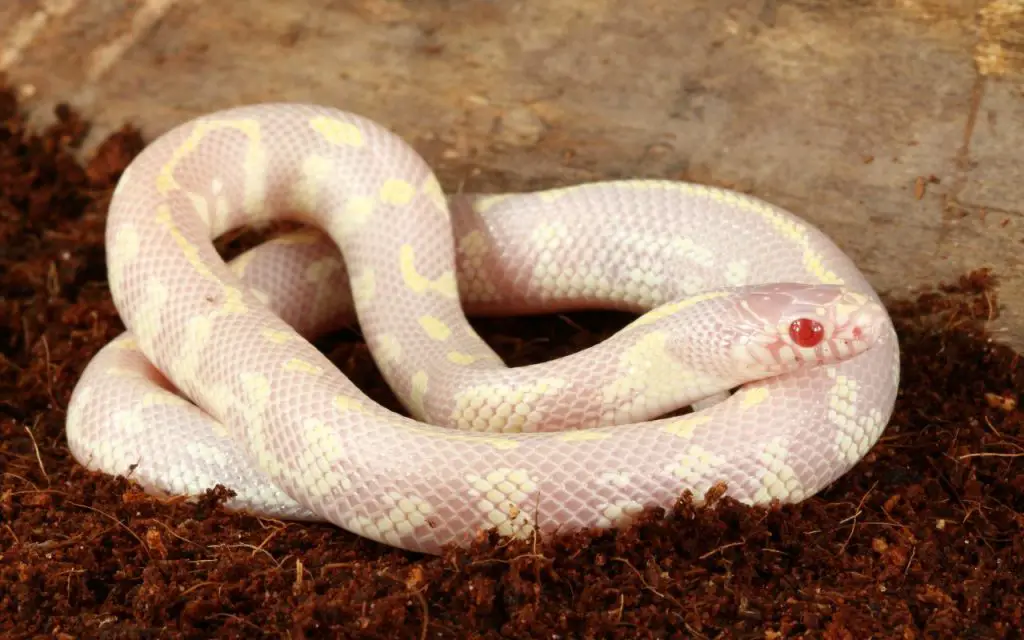
Causes of Mite infestation in Snakes
Your snake can catch mites because of a lack of sanitary conditions or through contact with another animal. When an infested snake encounters another, mites simply crawl onto the new host. Water, decorations, or substrate will also help mites increase their reach and affect more animals.
As you can see from the list below, there are multiple species of mites that affect snakes. Some more widespread than others, but all having similar symptoms.
- Ophionyssus acertinus
- Ophionyssus natricis (the most common)
- Trombiculidae mites (Chiggers)
All of these will look like tiny specks of red, orange, or brown color on the snake’s skin.
Diagnosis of Mites
Once you have seen moving specks on the snake’s body or in the water, it is time for a vet visit right away. Get samples from the water and try to place your snake in a plastic enclosure for easy examination by the vet.
If you can’t get to a vet, see below for some home treatment tips.

Treating mites on Snakes
Sterilize the enclosure two to three times a week with hot, soapy water or very diluted bleach to discard any hidden eggs. After this, apply an Ivermection, pyrethrin or permethrin solution to the enclosure.
You can find these for sale online, just make you buy a reptile-appropriate one and respect the dilution ratio. Also treat all the wooden branches and other decorations from the cage and discard the substrate.
Be sure to rinse thouroughly before letting the snake return. Ivermectin can be DEADLY if your pet comes into contact with it!
At the same time, give the snake a bath in Betadine (povidone iodine) or dish soap. Use warm water to dilute it and make it look like a tea color. Keep the snake in this mixture for an hour. Make sure the water is lukewarm – not too hot!
If you are using a bioactive enclosure, on the other hand, Taurus mites are a much easier solution. Taurus mites are a predatory species that kills snake mites without doing any harm to the snake. All you do is release them into the enclosure.
Snake Ticks
Ticks are possibly even more dangerous for your snake than mites. Ticks not only suck the blood, but they also transmit various diseases along with causing respiratory blockage and nervous system damage.
In the wild, ticks are not dangerous on snakes. But in captivity, having no place to go, they create colonies on your pet’s body and wreak havoc.
The snake soon dies of disease transmitted through the bites, anemia, or nervous system damage. Ticks are larger in body size, and you can easily spot them with the naked eye.
Back when wild-caught snakes were regulary sold, ticks could often be found on Pythons and other popular pet species for sale. Fortunately, captive breeding means they are less of a problem these days.
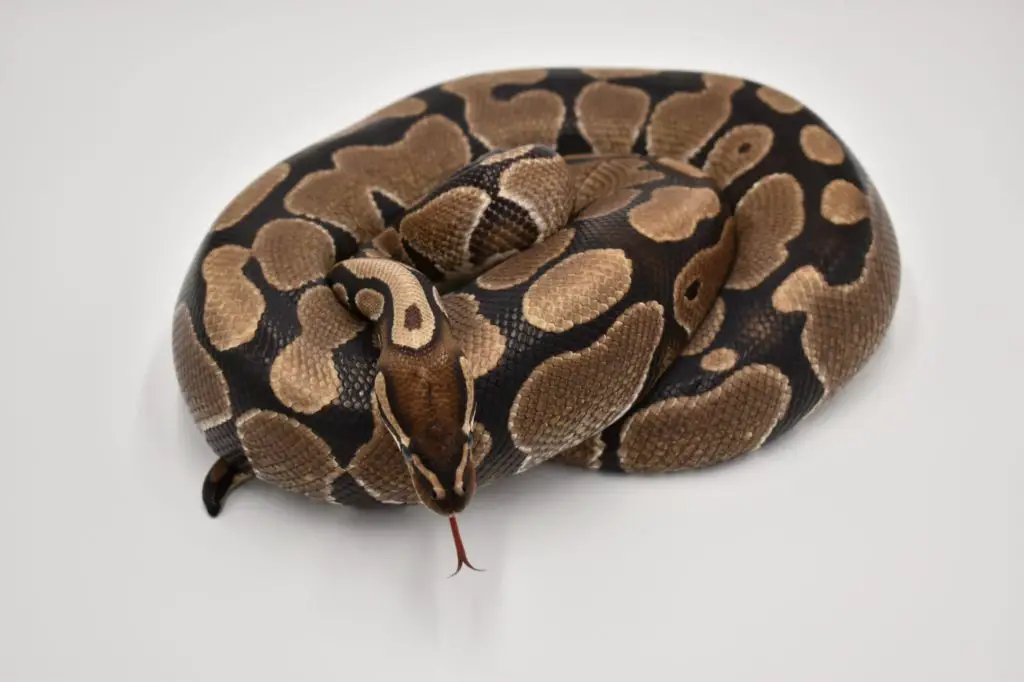
Symptoms of Ticks in Snakes
Ticks are visible in snakes, and they are usually on the upper side of their body. Still, the following symptoms will also help you identify these parasites.
- Aggravation
- Irritation
- More time in the water
- Refusal to eat
- Abnormal behavior
- No shedding
- Weight loss
- Rubbing against objects
- Abnormal shedding (Dysecdysis)
- Hemorrhages
- Anemia

Causes of Ticks in Snakes
Like mites, these fellow arachnids are most often transferred to your pet by other animals. That said, the following issues can increase the chances for your snake getting them:
- Overcrowding
- Lack of handling
- Low medical care
- Unsanitary conditions
- Sharing the belongings of other animals
Diagnosis of Ticks in Snakes
The symptoms and the presence of this parasite on the snake`s body will make tick infestation easy to diagnose. Look at the image below:
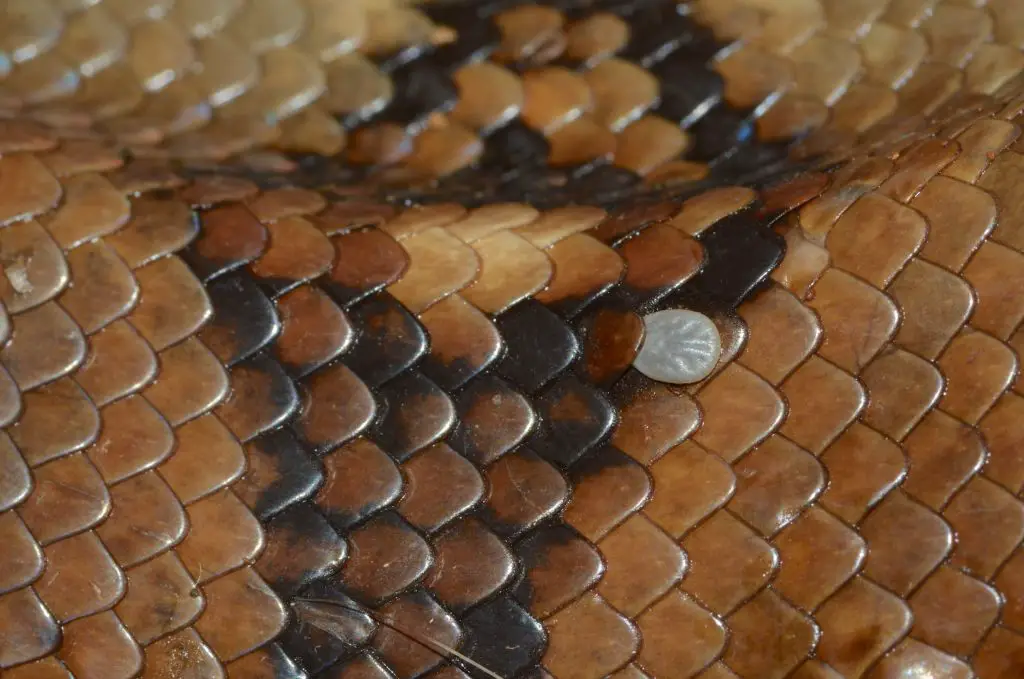
Treatment of Ticks in Snakes
You can purchase tick removing tweezers online or at your local pet store. Never use your hands to pluck them as you would be pumping the disease-infested blood back into your snake’s body. Wipe the bitten area with an alcohol pad and dip the tick in alcohol to kill it.
Intestinal Worms (Helminths) in snakes
Snakes are regularly infected with worms in the wild. But in captivity, they only get infected by encountering infected cage mates, water, substrate, or food. Unfortunately, some worms can reproduce in them rapidly and cause severe damage to the internal organs.
On the other hand, other species can remain almost symptomless, apart from a slight decline in your snake’s long-term health.
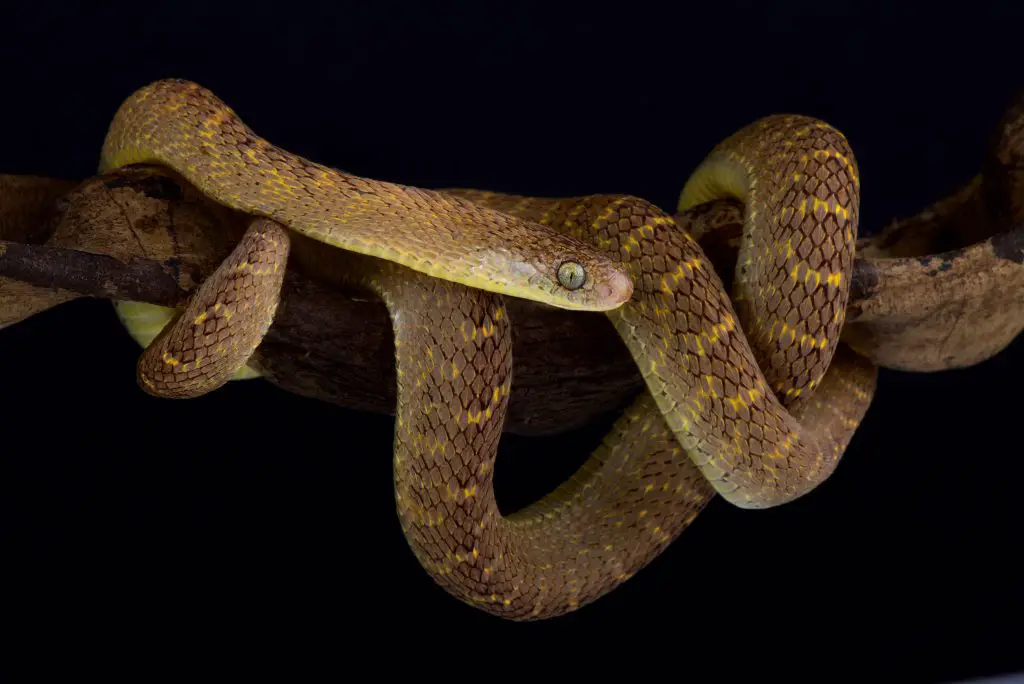
Symptoms of intestinal worms in snakes
Abnormal behavior or a decline in body condition will be the first thing you notice when your snake is affected by intestinal worms. When you see either of these, look closely and observe your snake for any of the following symptoms:
- Loss of appetite
- Rapid or continuous loss of weight
- Vomiting/regurgitation
- Abnormal stools
- Diarrhea
Types of worms in snakes
Some worms will be conspicuous in the feces, whilst others are only visible under a microscope. Most of the worms that affect reptiles belong to the Roundworm (Nematodes) group, though some Tapeworms (Cestodes) are also a problem.
- Pinworms (very thin, thread-like roundworms)
- Hookworms (usually not visible, also roundworms)
- Ascarids (clearly visible, spaghetti-like roundworms)
- Tapeworms
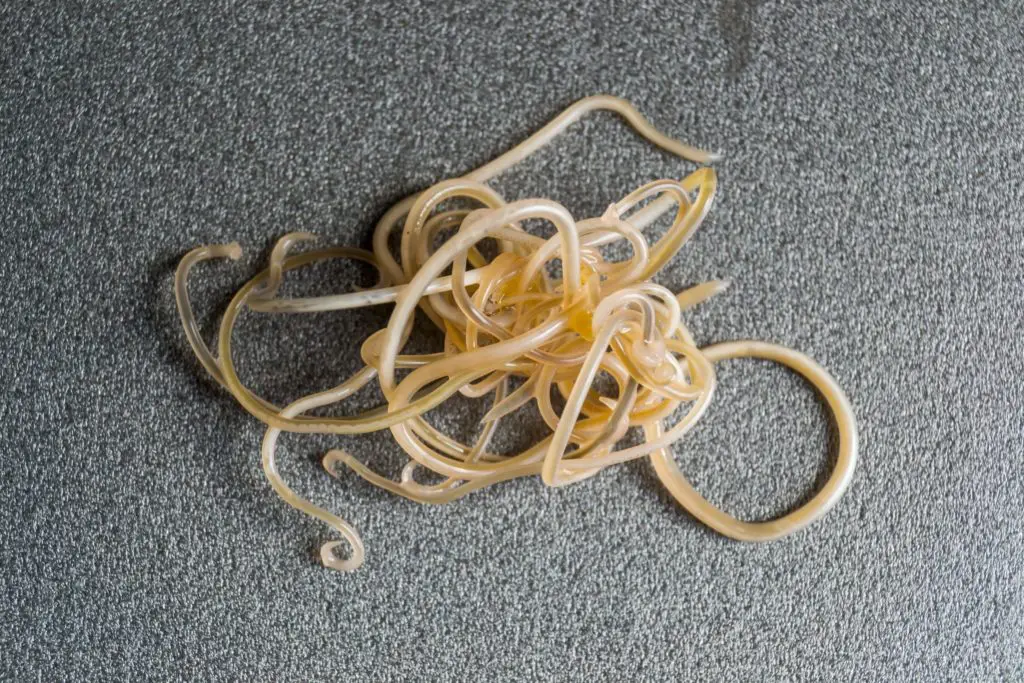
Causes of worms in snakes
Ingesting feces, eating affected food, and living in unsanitary conditions can lead to your snake catching intestinal worms. Most of the time, owners don’t know about these things until the snake starts showing symptoms.
Diagnosis of worms in snakes
The symptoms listed earlier will help you know when to take your pet snake to the vet. The veterinarian will send the fecal sample to the laboratory or examine the sample under a microscope to confirm the type of worms. The diagnosis will help in deciding the treatment method for these worms.
Treatment of worms in snakes
You cannot decide on your own regarding the type of worms in your snake. Always follow vet prescribed methods and mediation to diagnose and treat this problem. The use of antibiotics along with anthelmintics or de-wormers is usually effective, but veterinary assistance is vital when it comes to dosage.
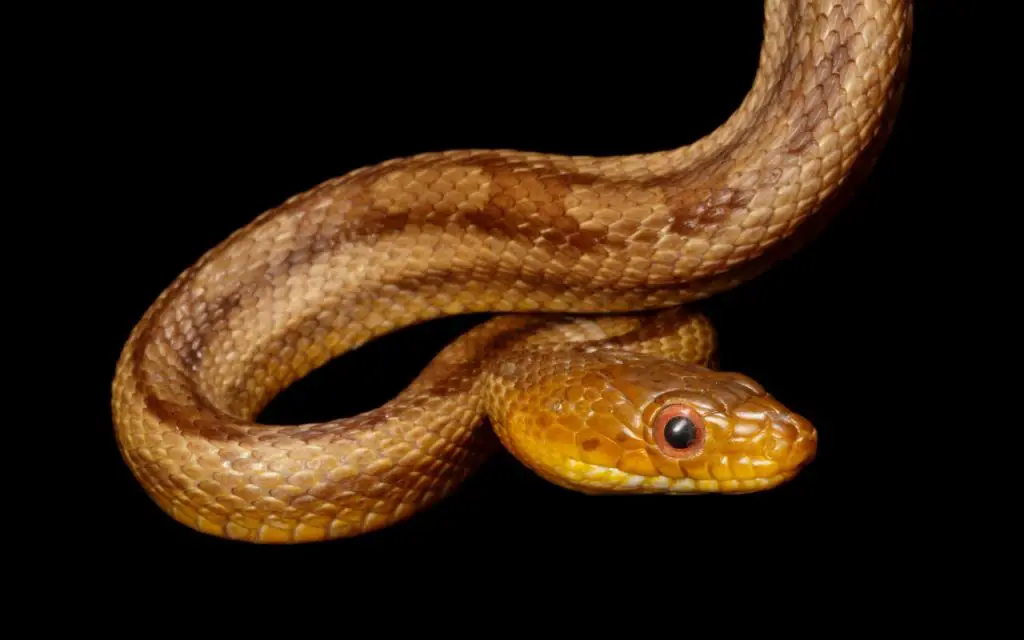
Snake Protozoa (Flagellates)
Protists are tiny, unicellular animals that include some of the famous names you’ll remember from school sciences classes, such Amoeba and Paramecium. Certain protozoa live in freshwater, but many are equally at home in the gut of living creatures.
The group of Protozoa that most commonly affect snakes is called the Flagellates. This is because they have a flagellum, or whip-like tail for locomotion.
Most Protozoans are commensal as they survive by eating the food that the host consumes or by living in its environment. This means these tiny creatures are not dangerous in small numbers. But when their colony size increases – through lack of hygiene for example – they can be fatal to snakes and other reptiles. You cannot identify these tiny creatures without a fecal test and examination by a laboratory.
Symptoms of Protozoa in snakes
You will not see any visible sign of these parasites, given that they are microscopic. As a rule, the symptoms listed below can be a good indicator that something is going on:
- Soft unformed feces
- Mucus in the feces
- Blood in the feces
- Dehydration
- Weakness
- Food particles in feces
- Loss of appetite
- bloating of the mid-section as with a large meal (with Coccidian Protozoa in particular)
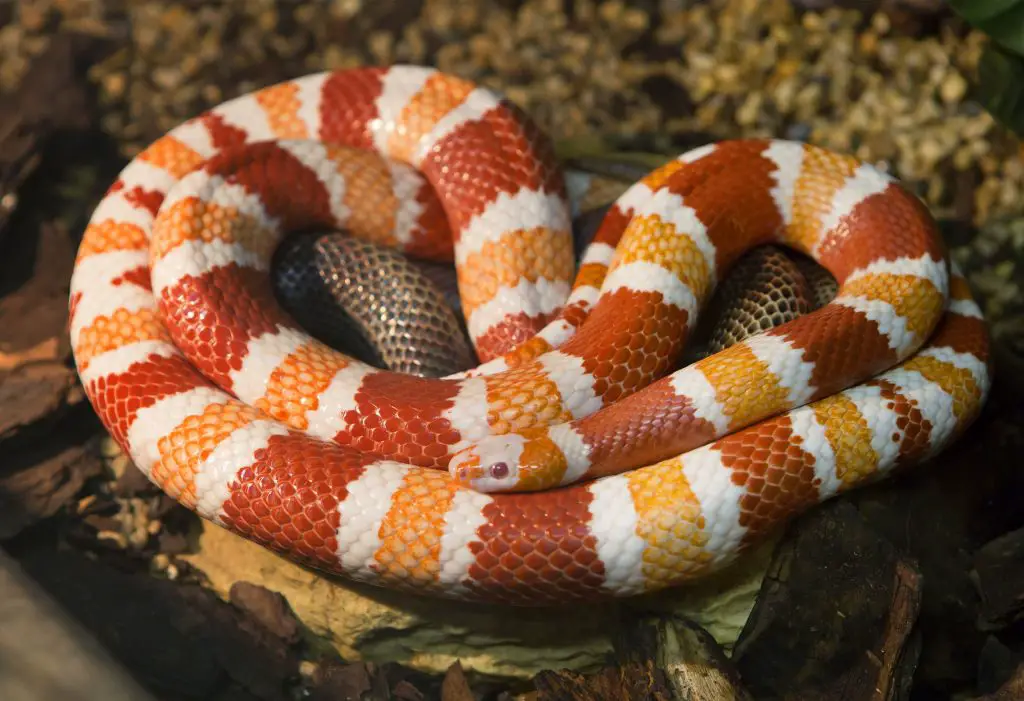
Causes of Protozoa infestation in snakes
The main cause of protozoa infestation is infected food. When a snake eats infected food, these parasites get into the digestive system and start their colony there.
Severe cases result in infection with other diseases along with weight loss or death. Unsanitary conditions in the pet store or their enclosure is usually the root cause.
Diagnosis of protozoa in snakes
Fecal examination is the only thing that can help you spot the presence of these parasites in the snake’s body. You can take a sample of fresh feces to the vet for analysis. The test will reveal the presence and or type of these parasites for treatment.
Treatment of protozoa in snakes

Vets do not recommend using medication for protozoans on your own. The best approach here is to go to the vet and follow the procedure. You must sanitize the belongings of the snake and clean the cage two to three times every week for the month. You will be asked to administer antibiotics at home, usually for a couple of weeks.
Metronidazole is the most common medicine that vets prescribe in such situations.
Conclusion
As we have just seen, many parasites show obvious signs and symptoms like loss of appetite, stunted growth, inflammation of the body, and infections. Others remain hidden, meaning it can take considerable time to realize how much damage they cause.
The best approach is to keep a watch on the diet and growth of your pet snake to ensure that you know what is normal for it. If you notice a change in appearance, appetite, or behavior, it is possible that parasites are at fault.
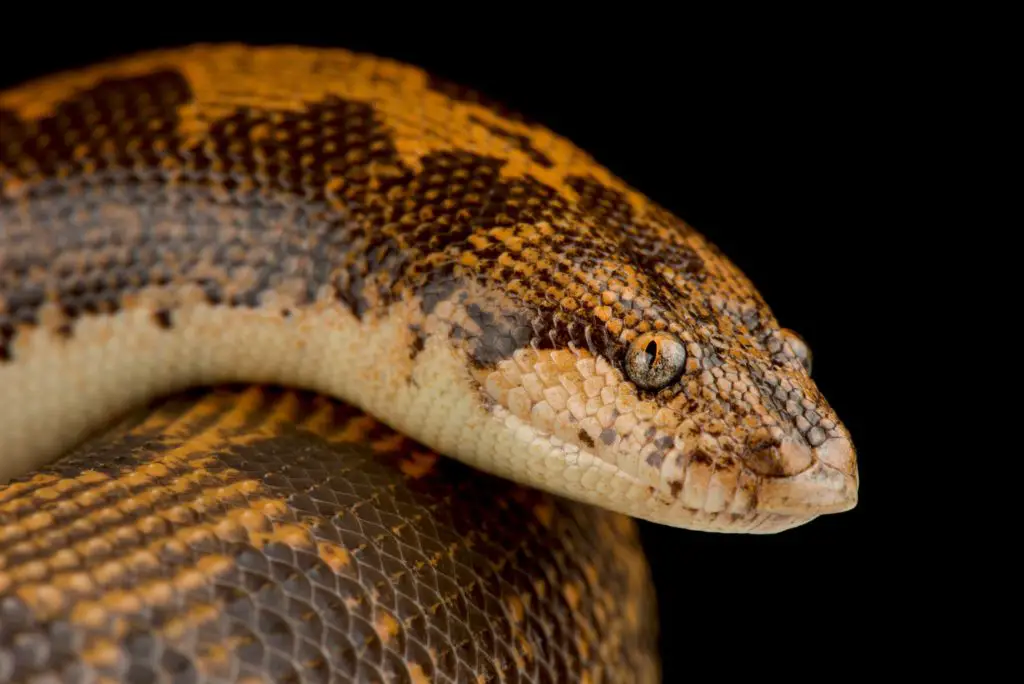
Key points to remember about snake parasites:
- The clinical signs of external parasites like mites and ticks are easy to spot, but don’t hesitate to contact other keepers for advice. Some small lice, insects and harmless mites inhabit wood and substrate, occasionally being mistake for the common snake mite.
- Internal parasites of the intestinal tract are much harder to discern. Don’t always expect to see them in your snake’s droppings. Instead, look for abnormalities in the droppings themselves, along with unexplained weight loss.
- Most intestinal worm species infect the digestive tract via prey items that we feed our pets. Be particularly cautious when sourcing frogs or worms for species such as garter snakes.
- Remember that some snake parasites are harmless in snakes, but potentially lethal to other captive reptiles: and vice-versa. Certain protozoan parasites, for example, could be more dangerous to Leopard Geckos than a Water Snake. At the same time, parasites found in a Corn snake from central Florida could be harmless to it, but deadly to reptiles from elsewhere, even from other parts of North America or the United States.This is because host species build up resistance to the parasites that infect them most often. Always keep different species separate.
- Effective treatment of many protozoa species is hard, and they are some of the most problematic reptile parasites: help from a reptile veterinarian is strongly advised. (always take a fresh fecal sample to the appointment)
- Not all protozoa are problematic, and the presence of these endoparasites is normal in all reptile species, so long as they are under control. Keeping them in check is a delicate balance given that pet reptiles typically live in a small space that can get dirty quickly. It involves good hygiene practices. This includes regular substrate changes and disinfection of the enclosure.
- Always bear in mind that stressful situations and other health problems can make a parasitic infection progress quickly, and overall health for your pet animals should be your goal at all times. The tougher they are, the better they’ll respond to treatment if they are ever infected with something.
- Different species of parasites probably play an important role in wild animals, but ectoparasites and worms should never be tolerated in captive-bred reptiles. Our goal is always to give pets an easier time than they would have in the wild!
